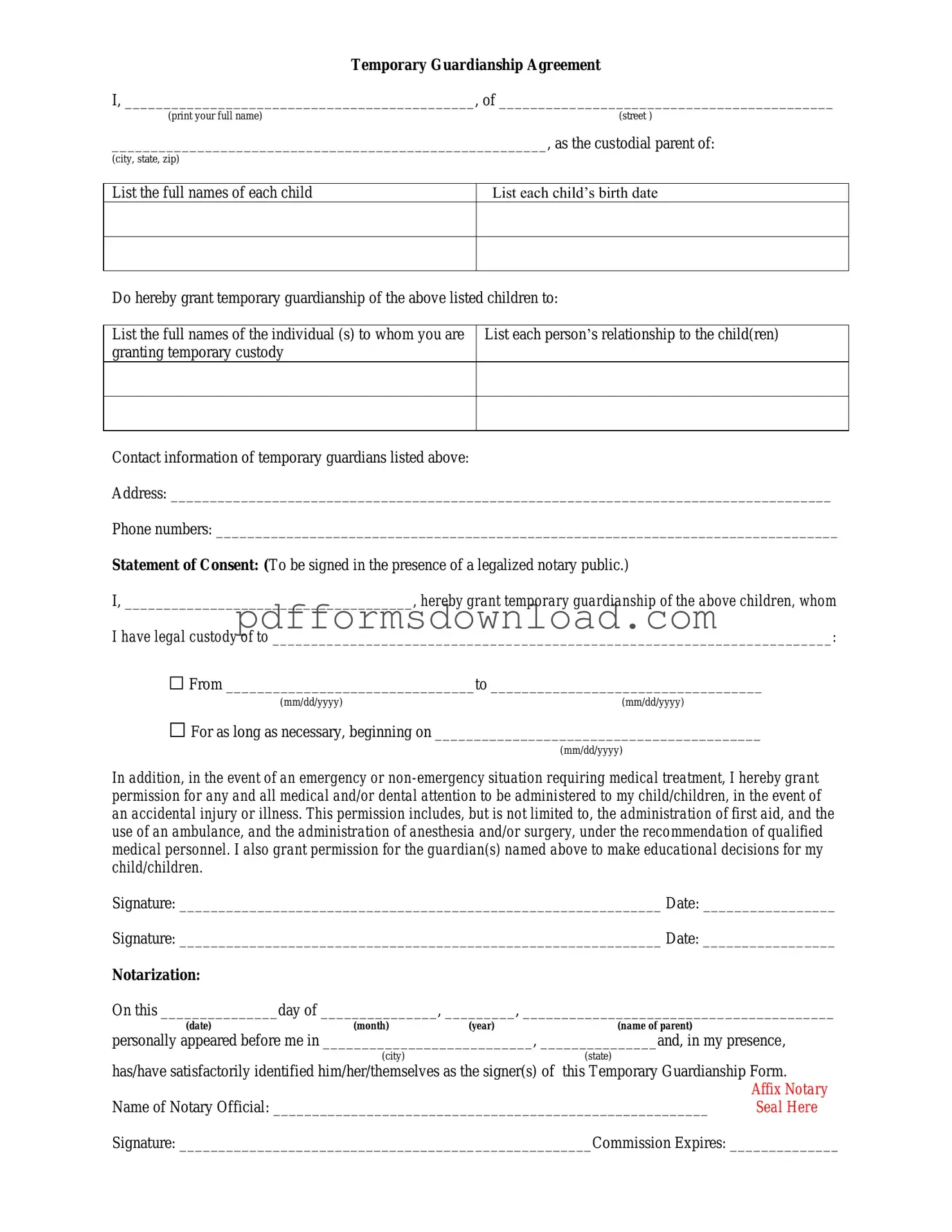What is a Temporary Custody form?
A Temporary Custody form is a legal document used to request temporary custody of a child. This form is typically filed in family court and is meant to establish who will take care of the child for a specified period, often during a divorce or separation process.
Who can file a Temporary Custody form?
Any parent or legal guardian of a child can file for temporary custody. Additionally, other relatives, such as grandparents or aunts and uncles, may also file if they can demonstrate a significant relationship with the child and a valid reason for seeking custody.
What information is required to complete the form?
The form typically requires information about the child, including their name and date of birth. You will also need to provide details about the current living situation, the reasons for requesting temporary custody, and any relevant background information about the child’s parents or guardians.
How long does temporary custody last?
Temporary custody is not permanent. It lasts until a court hearing can be held to review the situation. This period can vary, but it is usually for a few weeks or months, depending on the court's schedule and the specifics of the case.
What happens after I submit the Temporary Custody form?
After submission, the court will schedule a hearing. Both parties involved will be notified of the date and time. During the hearing, a judge will review the evidence and make a decision regarding temporary custody.
Can the Temporary Custody order be modified?
Yes, a Temporary Custody order can be modified if there are significant changes in circumstances. Either party can request a modification by filing the appropriate paperwork with the court and providing evidence to support the change.
Is legal representation required to file for Temporary Custody?
Legal representation is not required, but it is often recommended. An attorney can provide guidance through the process, help prepare the necessary documents, and represent your interests in court.
What should I do if I have concerns about the child's safety?
If you have immediate concerns about the child's safety, it is important to act quickly. You may want to contact local authorities or child protective services. Additionally, you can file for emergency temporary custody if you believe the child is in danger.
